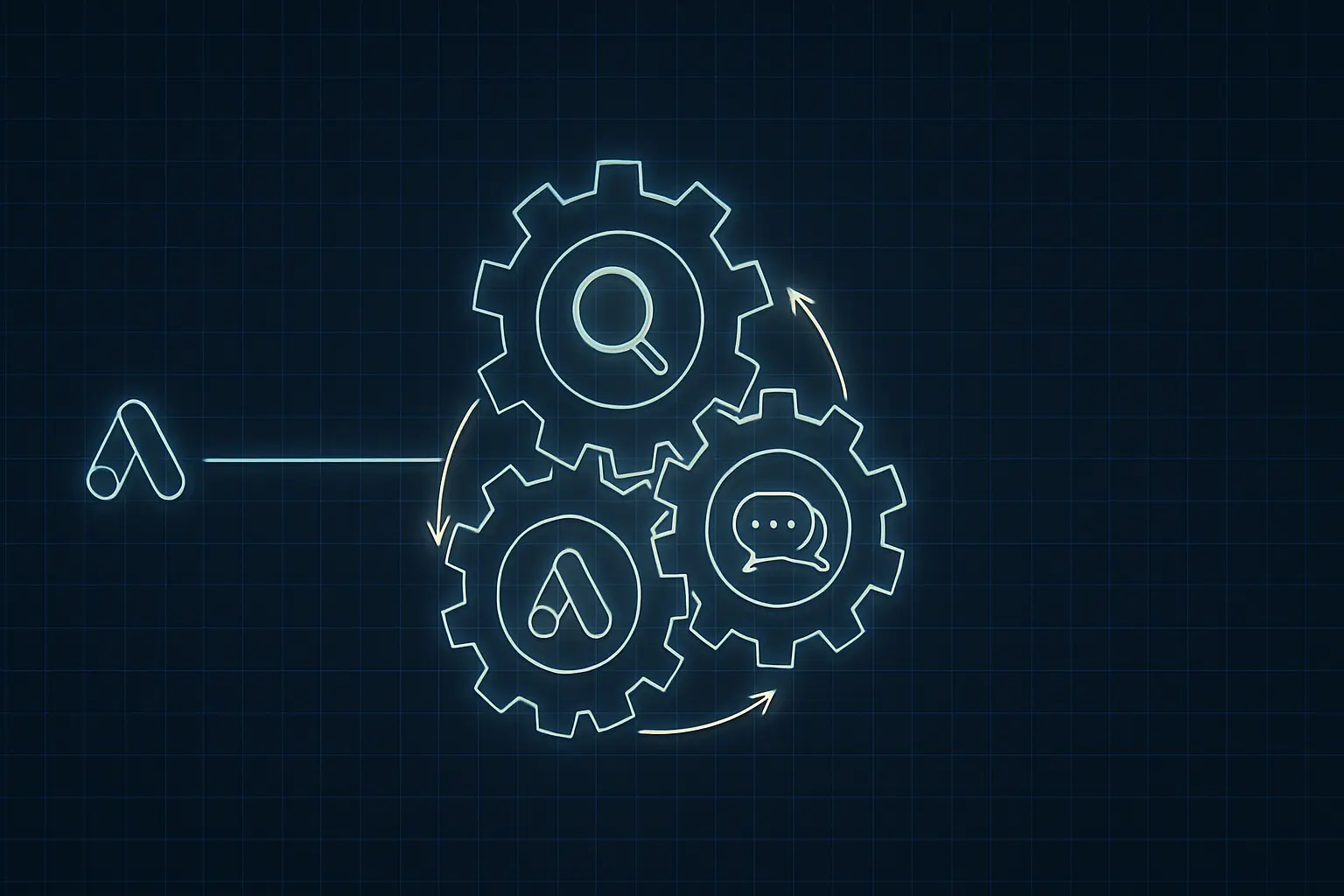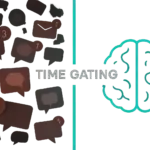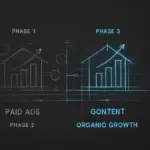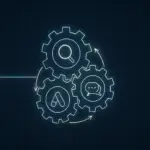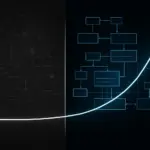When we began structuring the digital system for Iberosattel.de, a premium German saddle brand, we faced a familiar situation. Nearly 80% of its qualified leads came from a single, reliable source: Google Ads. This was effective but fragile. The system was rented, not owned. Our goal wasn’t just to find more traffic; it was to build a self-reinforcing asset—an engine where every component made the others stronger.
This log documents the four phases of that transition: moving from pure performance marketing to an integrated ecosystem where editorial content became the core driver of growth.
Phase 1: Mapping the Terrain with Paid Search
We started with what worked: paid search. The German equestrian market is a €6.7 billion industry, but the digital landscape for high-value products like custom dressage saddles is surprisingly fragmented. Our initial SERP analysis showed a clear divide. Transactional keywords were dominated by e-commerce giants, while specific, problem-oriented searches like dressage saddle for short back horse led to unstructured forum discussions or academic articles.
There was a massive gap in the middle for a trusted expert guide.
Our strategy was to use Google Ads as a high-speed reconnaissance tool. We didn’t just bid on obvious keywords; we built campaigns around the specific problems and questions that serious riders face during their evaluation process.
The Observation: Within weeks, our data confirmed a critical hypothesis: the highest-converting traffic came not from users searching for a product, but from users searching for a solution. They were deep in their evaluation, weighing options, and their biggest fear was making an expensive mistake that could harm their horse. Competitors like Kieffer presented technical specifications but failed to explain why a rider should choose one option over another. Our ads succeeded because they promised answers to those „why“ questions.
The Framework: We used paid search to build a precise map of user intent. Every high-performing keyword was a signal, a pin on the map indicating a significant user pain point. This wasn’t just lead generation; it was market research in real time. This gave us a validated list of the exact problems our audience needed to solve before making a purchase.
The Insight: Google Ads gave us speed and predictable lead flow. But its most valuable output wasn’t leads—it was the data that would become the blueprint for our long-term, ownable asset: an organic content system.
Phase 2: Building the Organic System from Ad Data
A landing page with bullet points isn’t enough to convince someone to invest in a premium, custom-fitted saddle. The decision is complex, emotional, and fraught with risk. Our ad data had proven users were hungry for expertise, so we designed our organic strategy to meet that need directly.
We systematically turned our best-performing ad groups—those targeting the most painful and specific problems—into creative briefs for long-form, authoritative SEO articles.
The Observation: Our most successful ad campaign was built around fitting saddles for horses with short backs, a common and difficult challenge. The data showed high click-through rates but also a longer consideration phase. Users clicked, read, left, and came back. They were doing deep research. A simple landing page couldn’t contain the depth of information required to build the necessary confidence.
The Framework: We commissioned an in-depth article titled „The Complete Guide to Fitting a Dressage Saddle on a Short-Backed Horse.“ It wasn’t a sales page; it was an educational resource. We explained the biomechanics, detailed technical solutions like compact trees and upswept „Freiraum“ panels, and used diagrams to show why bulky rear gussets often fail. We transformed a page built for a quick conversion into a definitive guide meant to create a confident, educated buyer. Initially, this page was set to noindex and used exclusively for our ad traffic.
The Insight: The real win wasn’t just creating an SEO asset. It was discovering that deep, educational content could serve both paid and organic channels far more effectively than a traditional landing page. This piece started as an experiment to improve ad conversion but quickly became the cornerstone of our entire content strategy. This embodies a core principle of the [Running Systems] framework: build components that serve multiple functions.
Phase 3: Integrating Channels for a Conversion Boost
The next phase focused on integration. The organic content we’d built was performing well in search, but its true power was unlocked when we looped it back into our paid traffic funnels.
The Observation: We ran a simple A/B test. Group A saw our standard, conversion-focused landing page. Group B was sent to our new, long-form SEO article about fitting short-backed horses. The result was immediate and decisive. The article’s conversion rate was significantly higher. Visitors from Group B spent more time on the page, had a lower bounce rate, and were more likely to request a consultation.
The Framework: We stopped treating paid and organic as separate channels. The SEO articles became our primary destination for all mid-funnel traffic, regardless of source. They were designed to answer questions, handle objections, and build trust—precisely what a user in the evaluation stage needs. By satisfying their informational intent first, commercial intent followed naturally. These articles proved so effective that we integrated them directly into the site’s main navigation and featured them on the homepage, turning them from satellite assets into the core of the brand experience.
The Insight: The system taught us that for high-consideration products, the best conversion tool isn’t a better sales pitch—it’s better education. By investing in authoritative content, we weren’t just capturing organic traffic; we were making our paid advertising spend more efficient. Each channel was now strengthening the other in a positive feedback loop—a concept we explore deeply in our [JvG-Thoma.com] projects.
Phase 4: Closing the Loop with the Brand Ecosystem
The final phase saw the system become a true ecosystem. Iberosattel’s social media channels, managed independently, focus on brand storytelling, community engagement, and visual appeal. While not directly tied to our performance marketing efforts, they began to feed into the engine we had built.
The Observation: We noticed a shift in our analytics. Users were arriving on our SEO articles from social media referrals. They would see a post on Instagram, become curious about the brand, search for it, and land on one of our guides. The content we had built to capture search intent was now the perfect mid-funnel educational resource for an audience warmed up by social channels.
The Framework: The system had become self-reinforcing.
- Social Media built brand awareness and community.
- Paid Ads captured immediate, high-intent searchers and provided real-time data.
- SEO Content educated and built trust with both audiences, converting them at a higher rate.
This created a flywheel effect. The authority gained from our SEO content made the brand more credible on social media, while brand awareness from social media created more branded search queries that our content easily captured. Each part of the system was now contributing to the growth of the whole.
The Insight: You don’t need to control every channel for them to work together. By building a strong educational core—our SEO content—we created a center of gravity that naturally pulled in traffic from all other sources. The goal is not to manage channels in silos, but to build a central brand asset so valuable that all channels inevitably point to it.
Frequently Asked Questions
Isn’t an SEO-focused content strategy much slower than just running ads?
Initially, yes. But it’s an investment in an owned asset. Ad traffic stops the moment you stop paying; an authoritative content library generates leads and builds brand equity for years. Our approach uses ads for speed and data, then reinvests those learnings into the long-term asset.
How do you measure the ROI of an article that isn’t a direct sales page?
We measure it in three ways:
- Direct Organic Performance: Leads generated from organic traffic to the article.
- Assisted Conversions: How many users read the article before converting through another channel (like a direct visit or a branded search).
- Paid Channel Lift: The measurable increase in conversion rates when sending paid traffic to the article instead of a standard landing page.
Why not just focus on product pages like your competitors?
Because our research showed that in the premium market, the purchase isn’t about features—it’s about confidence. Competitors who only show product specs force the user to do their own research elsewhere. We win by becoming the destination for that research, guiding the user through their evaluation and building trust at every step.
This project is a living example of how marketing channels can be designed as an interconnected system. The initial focus on paid traffic didn’t just generate leads; it gave us the data to build a more resilient, scalable, and profitable engine for the long term.
